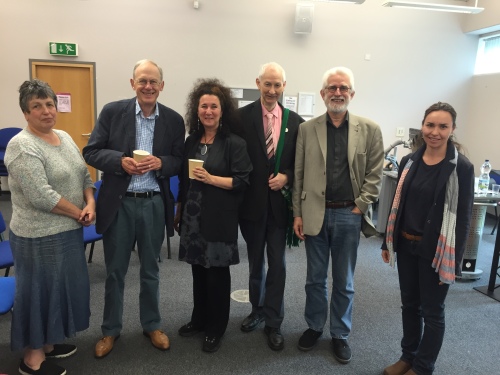There is currently a growing desire to see interfaith dialogues tackle some of the grittier issues facing society and to have ‘Difficult Conversations’. This is combined with a tendency to be dismissive of ‘tea and samosa’ events that are deemed to be all well and good but don’t go far enough or deal with the real issues of today. Over the years I’ve also been critical ‘tea and samosa’ events that seem to focus solely on similarities between faiths and so have made an effort to find ways to discuss and affirm differences. In the past couple of years I’ve also been involved in running the Birmingham Conversations which have sought to have ‘difficult conversations’. So, whilst I am delighted to see others embrace the idea of acknowledging differences and hold difficult conversations I have a few observations and concerns that might be helpful for others wanting to get into discussing thorny topics.
Firstly when some people they say ‘We should discuss difficult issues’ what they actually mean is ‘we should discuss things that are contentious for other people because I’m concerned about them’. But those same people are too often very reluctant to discuss issues that they themselves find difficult. Discussing difficult issues becomes a way of highlighting problems in other communities without addressing issues closer to home.
Secondly many people find this really difficult for a variety of reasons:
1) They’re actually quite polite and friendly and don’t want to upset people or have an argument. If it’s with people you don’t know it can feel awkward to disagree when you don’t know their ideas or situation, or if it’s with friends people are worried that it might damage the friendship irreparably.
2) They don’t know how to raise or discuss a contentious issue in a constructive way as there are so few opportunities to learn or practise this skill
3) They lack confidence in their own position worrying that they’ll look silly if they are proven wrong.
4) They don’t want to be accused of being racist, sexist, Islamophobic, homophobic etc. This is not something to be taken lightly. With people tweeting comments in meetings it’s easy for someone to accuse someone of being one of these ‘isms’ and for it to be public which can really affect people even to the point of them losing their jobs.
The result is that creating a constructive way to discuss difficult topics is quite hard work and doesn’t just happen. Someone recently said, surely all you do is put a lot of people in a room throw in a few contentious issues and stand back. In my experience this rarely works, it either ends in nothing much being said, or a blazing row between a few people with others feeling embarrassed and awkward.
So here’s what I’ve learnt about facilitating groups to have difficult conversations:
1) Never underestimate how long it takes people to feel comfortable in a group to have a constructive conversation about a contentious issue. They might actually need a few ‘tea and samosa’ events before they feel comfortable with difficult conversations.
2) Facilitate the discussion well using a variety of discussion activities and techniques. It doesn’t just happen naturally, try using art or music to create different atmospheres and ways for people to respond. Have clear ground rules to help even the best group function well and stick to them.
3) Be aware of people’s emotions and how they impact and inform people’s response to difficult topics. An issue is difficult rarely because it’s a complex philosophical or ethical issue usually it’s because it upsets or annoys people.
4) Make it a genuine conversation between people and not just experts giving clever answers to justify their position.
5) Make it clear that people are not ‘representatives’ but are speaking for themselves otherwise they’ll feel they can’t answer as they don’t speak for the whole community.
6) Be sensitive to the fact that most issues are not difficult for everyone. Consequently some people in the group will be much more emotionally involved and affected than others.
7) Create an atmosphere of equality where everyone has to grapple with an issue that’s challenging for them.
8) Keep going it’s hard work but worthwhile




